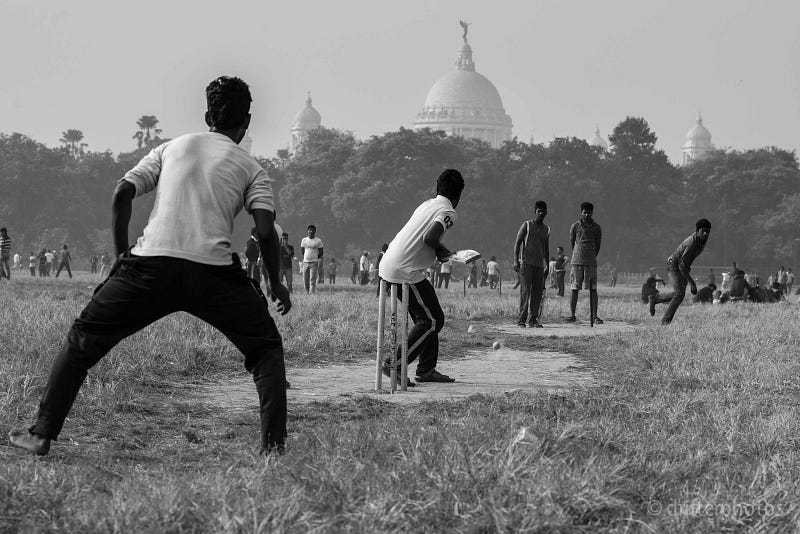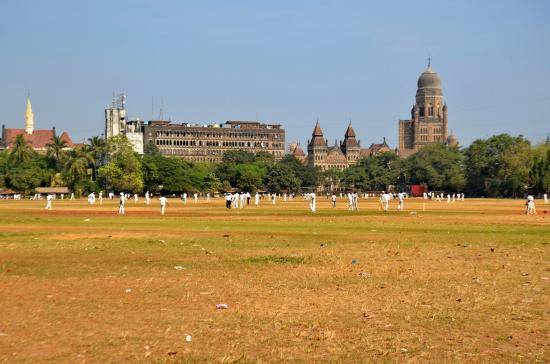There is immense growth and investment being made to uplift the IPL and international cricket and on the other end, the grassroots cricketers feel neglected and unrecognised.
Grassroots (local) cricket is the core foundation on which cricketers make an entry into the world of cricket. The stage, rather small, is a vital platform to locate the diamonds in the rough. And yet the local cricket is unrecognized and goes unrecorded by authorities.

Despite having the world’s largest cricket following, India faces the same problem of grassroots cricket as many other developing countries.
Quick fact: Virat Kohli started playing cricket at the age of 9 and joined the West Delhi Cricket Academy in 1998. He trained under the guidance of Rajkumar Sharma and played matches at the Sumeet Dogra Academy at Vasundhara Enclave simultaneously.
At CricHeroes, we are revolutionizing how grassroots cricket looks like. We aim to fill the gap using technology.
So where are we lacking?

Before we discuss the problem and solution of improving grassroots cricket, let’s understand what it is.
The grassroots cricket landscape
If you have observed closely, the nearest ground in your vicinity is flooded with kids playing cricket and some participating in Gully cricket.
Whether it is summer, monsoon or winter, cricket is always on especially in India. Children and adults alike come from all walks of life and communities to play cricket.
These local players playing for communities or school-level competitions or clubs are the real heroes of cricket. Grassroots cricket is a slightly unorganized form of cricket that follows a twisted set of rules and regulations.
What’s the future looks like?
Despite being a cricket-crazy nation, India is seeing a disappearing trend on the grassroots cricket front.
Advancing mobile games and high-speed internet is a big reason local players are restrained to the four walls of the house(most of the time). Even on the ground, many players care about their phones vibrating over focusing on peers’ skills and learning.
Secondly, the pandemic came in as a cherry on top. Kids and young adults needed a good excuse to stay home, and the novel virus gave them one. The amount of practice on local turfs before and after the pandemic has certainly reduced.

Apart from the macro factors which are beyond our control, there are a few fundamental issues with the institution of cricket in the country; let’s discuss them one by one:
- Grassroots cricketers lack awareness about the game, its rules, competitions, career options, and several noteworthy areas of the sport.
- A huge chunk of the local players reside in remote and rural locations of the country where equipment and information are inaccessible.
- The cost of ground maintenance and equipment is high. While there’s been continuous talk about the improvement of infrastructure for sports. The funds and investments have not yet reached grassroots cricket.
- The biggest nightmare of kids and their concerned parents is–no defined career trail or security in cricket. Parents don’t identify cricket as a serious career option, which means both kids and their parents lack the motivation to pursue the sport for the long term.
- The reason local fields are not well kept and look abandoned is that skilled ground staff and volunteers are hard to find.
- Less competition at the grassroots cricket level restricts the opportunity to get recognized on the national level.
- Access to seasoned and experienced coaches and cricketers is only offered to the privileged. Grassroots talent is often overlooked and misses out on getting the right exposure.
When will grassroots cricket return to full momentum?
There’s a huge scope of attracting more kids and budding cricketers to the local turfs. But the logical question is how?

The authorities and private companies must take a few measures to transform the landscape of grassroots cricket.
Coach training programs
A coach is the first stepping stone in a cricketer’s life. More coaches need to flood the market and the influx should be higher at the school, college, and club levels. Government can take up the task of recruiting coaches to support the sport and uplift grassroots talent.
Accessible and cost-effective sport
Making cricket a cost-effective sport can generate more talent. Even procuring the equipment can be a challenge for remote and rural kids.
Sports tourism
Encouraging sports tourism in the country can prove to be a huge motivator for the local kids. They see these opportunities and understand that there’s a monetary value attached to the sport. More matches would seek more cricketers.
More Domestic and International Competitions
We aren’t denying that there are plenty of tournaments running across the country but they aren’t enough to encourage the local talent. Not just the match but grassroots cricket should be associated with a decent award–if possible a decent cash prize.
Quick facts: Sachin Tendulkar, a mischievous kid, picked up his first cricket bat at the naive age of 11. Sachin’s brother, Ajit Tendulkar, recognized Sachin’s talent and introduced him to Ramakant Achrekar, a renowned cricket coach at Shivaji Park, Dadar in 1984. Not only did this life-changing event counter Sachin’s notorious behavior but entitled him as the most admired cricketer of our time.
Develop cricket academies, cricket infrastructure, and other facilities
Investment on-ground infrastructure and upkeep need to improve over throwing money on adding more seats in the stadium. In a population that houses approximately 1.4 billion citizens, imagine the demand for cricket academies and coaches.
And without saying, the government needs to intervene in grassroots-level development.
Data-driven analysis
With about 16.4 million registered cricketers, and 3.5 million+ cricket matches, the majority of them in India, CricHeroes is in an even better position to bridge the gap between professional cricket and grassroots cricket.
We recognized the importance of data analysis in cricket from the very beginning. In an attempt to give local players a chance to shine and get noticed, we designed the match scoreboard that captures:
- Match Information
- Match Summary
- Full Scorecard
- Commentary
- Analysis
- Heroes of the Match
- MVP — Most Valuable Players
- Gallery
With our free Cricket Scoring App: CricHeroes, local cricket matches are scored easily. You get a world-class match scorecard and advanced insights to understand the match like a professional cricketer (if you are a pro user).
The power of grassroots cricket
The time has come to bring the grassroots cricket season back into action. And why?
Because every international player, be it Virat Kohli or Mahendra Singh Dhoni has been a grassroots cricket player themselves. They received the right opportunity and support at the right time.
Similarly, grassroots-level development for cricketers can give talented players a fair chance to compete and get selected for international cricket tournaments.
As a closing note, we want to restate the notion that a wise investment in grassroots cricket today can build the right international cricket team for the future.
Lastly, we’d love to know your views on the grassroots cricket. What would you change about it? And what is the biggest gap local cricketers face?
Don’t forget to share your thoughts in the comment section!
I am Dhaval Jain, SEO All-Rounder at CricHeroes.
CricHeroes is an ultimate Cricket Scoring App and the world’s only true Cricket Network. With more than 30 million registered cricketers using CricHeroes to Live Score their Local Cricket Matches and Tournaments, CricHeroes is already the number one Cricket Scoring App in the world!










